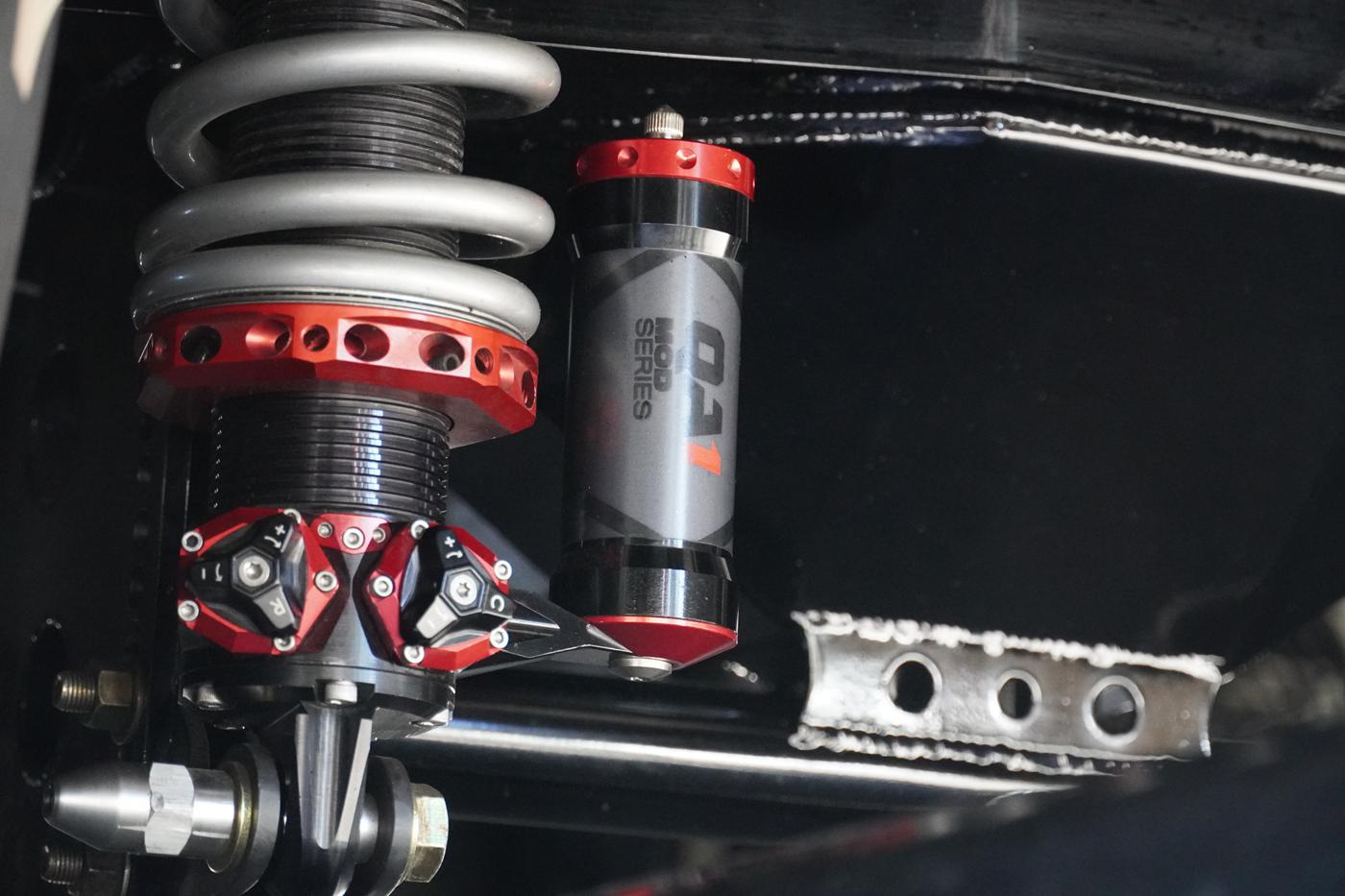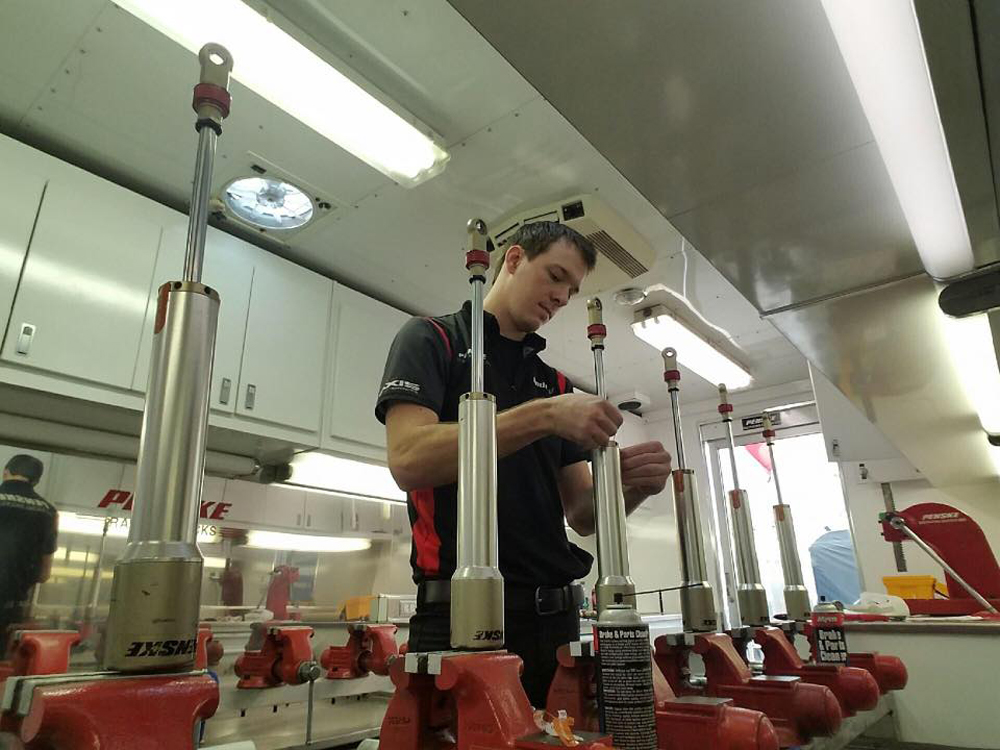Stop Doing That…Do This Instead: Setting Adjustable Shocks

Suspension experts consistently stress the importance of having a baseline shock setting, and to fine-tune adjustments in basic, definable steps. “Simply guessing is not a tuning strategy,” said our source at QA1.
These components allow for fine-tuning to achieve that perfect suspension balance. But an incorrect tune can lead to frustration and a back-of-the-pack finish.
Depending on the brand and model, an adjustable shock absorber offers multiple settings to twist and click into place. That means a racer has multiple opportunities to dial in the shock right, or right out of contention, and still have three wheels left to set up. Adjustable shocks are a crucial element of race car tuning, which means that disciplined, evidence-based scrutiny is absolutely essential when choosing the settings. Forgetting about old shocks is part of that process.
“Probably the first thing we run into when a customer’s putting new shocks on the car is that they tend to want to measure their old shocks with the compressed and extended lengths, and give us those measurements, which is not the way we choose shocks,” said Steve Smith of QA1, Lakeville, Minnesota. “We choose shocks based on the length of the shock at the desired ride height. They may have chosen a ride height that only gives them a limited amount of travel between fully bottomed out and fully topped out, which is likely causing the harsh ride they’re experiencing.”
Another issue arises when racers try to save money by buying cheaper shocks, which Smith said usually means fewer adjustment options. To properly dial in a race car, a racer needs the maximum amount of adjustability, which means selecting a double-adjustable shock, tunable on both the compression and rebound sides.
In all cases, the experts we interviewed stressed that it’s important to have a baseline shock setting—often defined in the setup sheets that come with the component—and to fine-tune adjustments in basic, definable steps. “Simply guessing is not a tuning strategy,” Smith emphasized. “Ideally, we make adjustments based on video, in slow motion, like a car leaving the line at a drag strip. It’s very hard to remember the split second when the car left from the driver’s seat.”
Another common mistake heard on technical support lines goes like this: “My buddy’s car has compression set at this, and rebound set at that, and he’s doing great, and I’m not.” Trying to mimic another car’s settings without knowing its ride height, weight distribution, and many other variables on a completely different car is, basically, guesswork.
Shocks also won’t correct a setup mistake involving a different component. In oval track racing, teams will typically run a differently valved shock at each corner. To get them to work in concert, “use the data you have, from your car,” Smith said, not somebody else’s. And don’t just rely on the “bumper test,” as it’s popularly called, to determine if things are going properly.
Penske Racing Shocks in Reading, Pennsylvania, offers not just a wide array of shocks for applications ranging from Formula 1 to local racing, but also dynos and testing equipment. Aaron Lambert said, “I like to tell customers that even though it’s an adjustable shock, you never want to run it full stiff. If you go stiffer and it feels better, that’s a good thing, but take it a step further and have the shock dyno’d.”

One common problem the team at Penske spots in pit areas is me-tooism. “In dirt racing, there’s a lot of chatter in the pits about what spring loads or shock build you should run. We see a lot of drivers and teams try to tune the car around that,” Lambert explained. “Also, a lot of dirt racers run bump stops because they don’t have the equipment to test their shocks. They think they’re one click off when, in reality, they’re 20 clicks off. It’s a whole-of-team, whole-of-car approach, and it has to be done at each corner. The better teams stay in their lane and focus on what they’re doing.”
Jeff Ryan of JRi Shocks in Mooresville, North Carolina, noted his firm’s broad selection of shock and adjustment options. “We try to make it as easy as possible with the instruction sheet. The biggest mistake is people losing track of where they set the shock at, and we always have a datum point that starts from zero, which is usually a full-firm or full-soft setting. Very often, even at a very high level, we see people turning the knobs the wrong way, thinking they’re stiffening it when they’re really loosening it. Then they start chasing their anti-roll bar positions, going in circles. Always record what you put down. We don’t put in too many adjustment tips, because in all the years I’ve been doing this, I still know that every driver’s different.”
SOURCES
JRi Shocks
jrishocks.com
Penske Racing Shocks
penskeshocks.com
QA1
qa1.net
 MEMBERSHIP LOGIN
MEMBERSHIP LOGIN JOIN PRI
JOIN PRI


